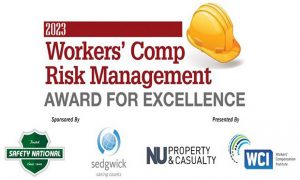Changing perceptions: A four-pronged approach to worker risk
Part 3 of 3: Fairfax County risk managers achieved award-winning workers’ comp outcomes by fine-tuning listening skills.

When Randy F. Jouben came on board in December 2017 as chief of risk management for Virginia’s Fairfax County, he quickly observed that the county’s employees had a less-than-positive view of the worker’s compensation program.
“In town halls and other forums, employees and managers voiced their disappointment and concern that the county’s program was motivated by cost containment, not by a genuine interest in supporting injured workers,” Jouben says. “There were a lot of antiquated assumptions, and people just weren’t happy.”
To uncover the specifics behind the dissatisfaction with the county’s workers’ comp program, Jouben had claims manager Anthony Smith and Karen Morgan, a claims specialist, survey employees.

“We wanted to gather as much information as possible to help us understand the root of the problems. Our goal was to design an effective new program that would not only help get employees back to work but prevent them from being out of work in the first place,” Jouben says. “We believed that employees required and deserved holistic, patient-centered treatment.”
The result of the listening-and-learning tours was an updated workers’ comp program that would introduce enhanced recoveries, shorter return-to-work timelines and lower insurance costs. The new program developed by Jouben and his team achieved this through a holistic four-part program comprising:
- On-site wellness and prevention;
- Custom medical panels;
- Mental and behavioral health; and
- Medication management.
The initiative also garnered Fairfax County a 2023 Excellence in Workers’ Comp Risk Management Award.
On-site wellness, prevention
“We started the on-site physical therapy service at the firefighter training academy for first responders who needed PT (physical therapy) or rehabilitative services,” Jouben explains. “To enhance their ability to work with first responders, the physical therapists got training to help them understand the challenges our firefighters face that go beyond standard PT needs.”
To gain buy-in for the on-site program, the risk management team worked with Gary Gize, Fairfax County’s return-to-work section program manager.
“As an experienced firefighter, he had a lot of credibility. He came from within the ranks and really supported what we wanted to do,” Jouben says. “He identified individuals who would benefit from the on-site program.”
The firefighters had good experiences with the physical therapists, who really clicked with the patients and demonstrated concern for their wellbeing.
“These workers also found that the on-site center provided a convenient place to keep fit and to get help for aches and pains that might develop into more serious problems if left untreated,” Jouben points out.
Although the on-site PT was initially open just to firefighters, the Police Department asked to get involved when they saw the positive results.
Since the on-site PT program was implemented, Fairfax County’s indemnity claims have dropped significantly; there were 199 in 2020 but only 159 in 2022. Custom medical panels
In partnership with Fairfax County’s managed care vendor, CorVel Corporation, risk management leadership established custom medical panels. The first step was to identify physicians and providers who would offer the best possible care for injured workers, as opposed to the lowest cost.
The resulting program includes an urgent care panel in 36 locations (provider offices) with a focus on occupational medicine, orthopedics, and infectious diseases, and another panel with more than 50 providers in such specialties as neurosurgery, ENT, neurology, and cardiology. The County also built a panel of mental health professionals — therapists, social workers, psychiatrists, and psychologists — who were qualified and willing to accept referrals for workers’ compensation.
“I’d really like to applaud CorVel,” Jouben states. “They took our concept and made it work. For example, they picked the right team of trained mental health nurses to interview our injured employees. The interviews they did were not tied to the claims, but to find out how our injured employees were feeling and to let them know someone was really listening to them.”
Wellness checks
The risk management team implemented wellness checks conducted by case managers when employees have reached 15 days of loss time. “The case managers make a point to reassure employees that we are concerned about their wellbeing, not just eager for them to get back to work,” Jouben stresses.
The case managers talk about how employees are feeling about their recuperation, whether they’re having any issues with their treatment program, how they are coping with life, and any mental or emotional issues they’re having, such as depression or anxiety, which can be common after an injury.
“We applied the wellness checks and mental health aspects first to fire, then police and then we extended it to all employees who have been out for 15 days to help keep them motivated and connected with our workplace,” Jouben says.
The wellness check program has received high marks from employees and management alike.
“Employees at all levels, including at the highest ranks, have reported that they feel really cared about. People are responding well to treatment and going back to work because they want to, not because we want them to,” he says. Medication management
Risk management implemented a pharmacy component into the overall case management program to get complete visibility into patterns in injured employees’ usage of opioids and other prescription medications. The system continuously tracks each patient’s utilization, and if there are warning signs indicating an overuse of opioids, the case manager contacts the attending physician.
The program also encourages alternative approaches to pain management. “It’s easy to medicate someone without getting to the core of the problems,” Jouben points out. “The opioid crisis gave us clear recognition that something needed to be done to prevent abuse. We not only looked at the pharma piece, but we got coordination between the doctors, claims adjustment, medication management and the employee, all working together. Trust made the medication management program successful.”
From adversaries to advocates
Since the new workers’ comp program was implemented in Fairfax County, employees and managers view the risk management team as allies in keeping them safe, healthy and productive.
“We are viewed as advocates. We don’t hear people saying, ‘You’re just trying to save money and reduce claims,’” Jouben says.
He also attributes the success of the program to communication.
“We were very open; we told people what we wanted to do and why. We stressed that we were focused on results, not economics,” Jouben says. “Since we opened the avenues of communication, people feel more comfortable about coming to us if they have a problem. We built trust over time. People have a level of trust that we are really listening and care about their needs.”
Risk management leadership sees the program as a work-in-progress and has plans for continuing innovation and expansion. These include taking the concept of on-site PT and expanding to locations that are closer to the employees.
“We would also like to create a health environment that includes nutrition and lifestyle changes,” he says, noting: “Healthier, fitter employees have fewer accidents.”
Jouben hopes that Fairfax County’s Workers’ Comp Risk Management Award for Excellence will act as a proof-of-concept, inspiring other risk managers to try the approach that was so successful there. “Maybe a fire department in California will read about our award-winning program and do what we did,” he says.
“The biggest benefit of an award like this is that we are educating other people about what can be done. If we can make the entire workers’ comp approach better for injured workers, it helps us all.”
See also:

